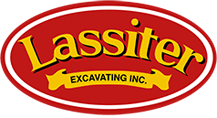Helical Anchor Installation Relies Upon Accurate Torque Measurements

Helical anchors enjoy widespread use today to help stabilize and secure above-ground structures, especially when that structure is built on ground that may be or has become unstable. The anchors themselves are steel shafts with helical coils or plates welded on at an angle. The shafts are screwed into the soil beneath the foundation to a depth that enables the coil to support the load. When foundation drilling calls for helical anchors, the depth of the anchor is drilled into the ground is determined by precisely measuring the torque it takes to turn the anchor. Generally, the higher the torque value the more stable the soil. This gives soil and structural engineers an accurate indication of the load-bearing capacity of the helical anchors. Once the appropriate depth and torque are reached the anchors are attached to the existing foundation. These anchors provide tremendous support against the pressures which can build up from soil movement or settling.
The relationship between torque and load-bearing capacity for Helical Anchors
The critical relationship between torque and capacity is a fairly recent discovery, being first posited in 1989 by Syracuse University Professor Sam Clemence and Bob Hoyt, an employee at A. B. Chance. The two men developed a mathematical formula which expresses this relationship precisely:
P = Kt T
In this formula, P represents axial capacity, T represents the installation torque, and Kt represents the capacity-to-torque ratio. The Kt variable itself is a function of the diameter of the steel column at the center of a helical anchor, with a minor relationship to the number and size of the helical plates attached to it. During their helical drilling experiments, the two researchers substituted various other factors upon which to base estimates of load-bearing capacity, but found that torque was by far the most accurate. That still holds true, with known torque figures being accurate predictors of capacity about 94% of the time.
One Pitfall of the Torque-Capacity formula
There is one disclaimer to note about the accuracy of the Torque-Capacity model, regarding the dimensions of the helical anchors themselves. Most of the extensive drilling and testing which has been done since the formula’s creation has relied on anchors with 1.5″ square to 3.5″ diameter shafts, and helical plates of 3/8″ thickness, 3″ pitch, and plate diameters between 8″ and 14″. When materials are used with significantly different manufactured characteristics, the predictive relationship between torque and capacity can be less accurate.
Current applicability
This exception notwithstanding, the Torque-Capacity model has proven to be quite accurate. Most excavation engineers today use the same formula to estimate load-bearing capacity of helical anchors installed, and it is also used to calculate the number of helical plates which will be needed, as well as their sizes. What does all this means to consumers whose projects require the installation of helical anchors? The anchors are never installed with guesswork – the characteristics of the installed anchors are the result of careful calculations, based on existing conditions of the specific local environment.
Precision helical drilling you can count on
Most people don’t need to know the precision that’s necessary in helical drilling. But it should be a comfort to everyone who requires this kind of service that their contractors have the expertise and the knowledge to do the job exactly right. For your next helical drilling project, make sure to contact your Bay Area drilling and excavation experts, Lassiter Excavating.

